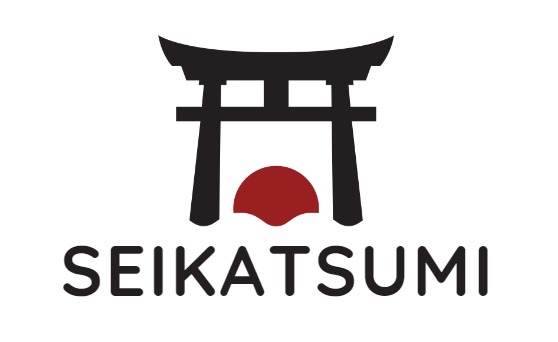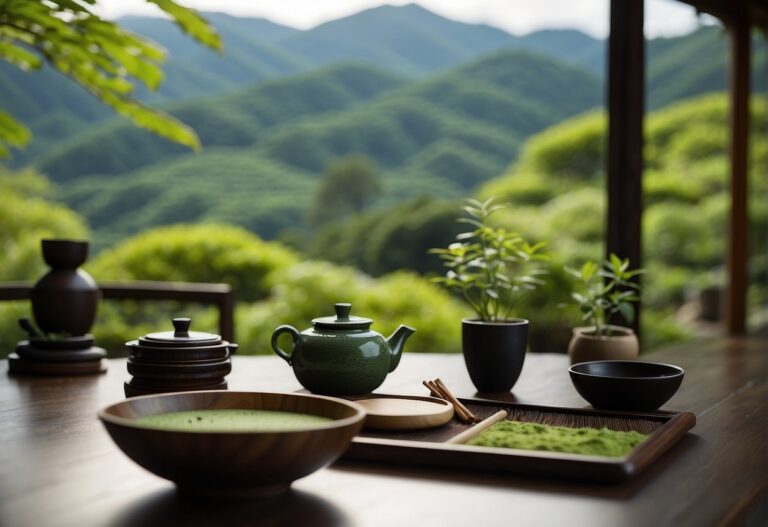Are you excited about exploring Japan? I share your enthusiasm!
I understand the thrill of discovering the best travel tips and hacks. That’s why I’ve gathered the most valuable insights to make your trip unforgettable!
I’m thrilled to introduce you to essential Japan travel hacks. From saving time and money to navigating unique landscapes and bustling cities, these tips will help you make the most of your visit.
So, why wait? Let’s make your travel dreams come true with these essential Japan travel hacks! 🙂
Mastering Transportation in Japan

Navigating transportation in Japan can be smooth and efficient if you know a few key strategies.
From the Japan Rail Pass to understanding the Tokyo Metro, here are some tips to make your travels seamless.
Efficient Use of the Japan Rail Pass
I found the Japan Rail Pass to be incredibly useful for long-distance travel.
It provides unlimited travel on JR trains, including the Shinkansen (bullet trains), which can save a lot of money if you’re planning to move between cities frequently. You can purchase a 7-day, 14-day, or 21-day pass depending on the length of your stay.
Make sure to activate the pass at a JR office, which you can find in major train stations and airports. Also, remember to carry your passport, as the pass is only available to foreign tourists.
To make the most out of the pass, I used the Hyperdia app to check train schedules and plan my trips efficiently.
Navigating the Tokyo Metro Like a Local

The Tokyo Metro can be intimidating at first because of its complexity but don’t worry.
I recommend getting a prepaid SUICA or PASMO card. These cards allow you to breeze through the ticket gates without having to buy individual tickets each time. You can also use them on buses and some shops.
I noticed signage in both Japanese and English, making it easier to find my way.
For non-Japanese speakers, train schedule apps like Hyperdia are invaluable for navigating the metro.
Most lines are color-coded, and maps are everywhere. Once you get the hang of transferring between lines, it becomes much easier.
Hidden Gems: Local Bus Routes and More
Beyond the well-known trains, local bus routes offer a unique perspective of Japanese cities.
In places like Kyoto and Hokkaido, buses can take you to destinations that trains don’t reach.
For instance, the Kyoto City Bus is great for getting around historical sites conveniently.
Many tourists overlook the Japan Ferry Pass 21, which allows you to take long-distance ferry trips. This is a budget-friendly option if you’re looking to explore Japan’s coastal regions.
Don’t forget to check out local apps that provide bus schedules and routes in English, making it simpler to explore lesser-known areas.
Savvy Accommodations: Sleep Smarter, Not Harder

Exploring Japan on a budget while ensuring a unique and comfortable stay is entirely possible. Options range from the innovative capsule hotels, to traditional ryokans, and modern short-term rentals.
Capsule Hotels: Experience Unique Budget Stays
Capsule hotels are a fascinating and affordable accommodation option in Japan.
These hotels provide minimalist pods that are perfect for solo travelers looking to save money. One night in a capsule hotel typically costs between 2,000 and 5,000 JPY.
You get basic amenities like shared bathrooms, free Wi-Fi, and sometimes even small lockers. Capsule hotels are especially popular in bustling cities like Tokyo and Osaka, making them a convenient base for urban exploration.
Hey you! Are you interested in more travel tips? Then be sure to check out our top articles! You definitely can’t miss it!
Japanese Travel Destinations – Spring Edition: Our Top Spots 2024
Ryokans: Where Tradition Meets Comfort
Staying at a ryokan gives travelers a chance to experience traditional Japanese culture and hospitality.
These inns often feature tatami-matted rooms, communal baths, and elaborate meals. Prices for ryokans can vary widely, ranging from 15,000 to 50,000 JPY per night.
Many ryokans are located near hot springs, offering a unique opportunity to indulge in a relaxing onsen experience. The personalized service and cultural immersion make ryokans worth the splurge for those looking to experience Japanese tradition.
Utilizing Short-Term Rental Apps
Short-term rental apps like Airbnb offer a flexible and often cost-effective way to find accommodations in Japan.
These rentals range from entire apartments to shared rooms, catering to different budgets and preferences. Prices can be as low as 4,000 JPY per night, depending on the location and amenities.
These rentals often come equipped with kitchens, allowing travelers to save money by preparing their own meals.
Additionally, staying in a neighborhood away from tourist hotspots provides a more authentic experience of daily life in Japan.
Culinary Delights: Eating on a Budget

Exploring Japan without breaking the bank is totally possible, especially when it comes to food. Here are a few tips that will let you savor Japan’s culinary delights without splurging.
Conveyor Belt Sushi: Quality at a Steal
I absolutely love visiting conveyor belt sushi restaurants in Japan.
These spots are incredibly budget-friendly and offer fresh, high-quality sushi. Plates typically cost between 100 to 300 yen each, making it easy to try a variety of delicious options without spending too much.
One of my favorite places is Sushiro, where you can enjoy everything from tuna to eel at a fraction of the price you’d pay elsewhere.
Plus, most of these restaurants offer a fun, interactive dining experience where you can watch the chefs at work.
Street Food Galore: Tasty Treats to Look for
Street food in Japan is a must-try.
Walking through popular street food spots like Osaka’s Dotonbori or Tokyo’s Asakusa, I discover an array of affordable and mouth-watering treats.
From takoyaki (octopus balls) to yakitori (grilled chicken skewers), the flavors are amazing and the prices even better.
Takoyaki, typically priced at around 500 yen for a serving, are little balls of joy, crispy on the outside and gooey on the inside.
Don’t miss the sweet delights like taiyaki, a fish-shaped pastry filled with red bean paste. This culinary adventure doesn’t hurt my wallet at all while giving me a taste of authentic Japanese cuisine.
Supermarket Secrets: Fresh Meals for Less
Japanese supermarkets are my go-to places for inexpensive yet delicious meals, especially in the evenings.
Supermarkets like FamilyMart or 7-Eleven offer a variety of bento boxes, sushi, and salads that are marked down significantly as it gets closer to closing time.
I often pick up fresh sushi rolls for as little as 300 yen or a bento box for 500 yen. These meals are prepared daily and offer a great way to eat well on a budget.
Supermarkets also stock snacks and drinks at a fraction of the cost you’d find at vending machines, making these spots perfect for budget-conscious travelers.
Cultural Insights: Enhance Your Journey

Exploring Japan opens the door to a world of unique festivals, impeccable etiquette, and fascinating language nuances that can make your trip unforgettable.
Embrace these cultural insights to truly experience Japan.
Festivals You Can’t Miss
Japan’s festivals are vibrant and filled with traditional music, dance, and food.
I recommend attending the Hanami, or cherry blossom viewing, which typically occurs in early April. It’s a breathtaking sight as the cherry trees bloom across parks and temples.
The Gion Matsuri in Kyoto, held in July, is another must-see. This festival dates back over a thousand years and features grand floats, street parades, and traditional music.
Donning a yukata, a casual summer kimono, adds to the experience.
For a winter delight, visit the Sapporo Snow Festival in February. Marvel at the intricate ice and snow sculptures illuminated at night. It’s an unforgettable visual spectacle that showcases Japanese artistry and creativity.
Etiquette Tips for Travelers
Understanding Japanese etiquette can greatly enhance your travel experience.
Bowing is a common form of greeting and shows respect. A slight bow works in most casual interactions.
Remember to remove your shoes before entering someone’s home or traditional accommodation. Slippers are usually provided, and there may be separate pairs for the bathroom.
Speaking quietly, especially in public transport, is crucial in maintaining harmony. Japanese people appreciate considerate behavior.
When dining, never stick chopsticks upright in your food, as it resembles a funeral rite. Placing them horizontally on a holder or the side of your plate is appropriate.
Language Basics for Easier Communication
While many Japanese people speak some English, learning a few basic phrases enhances interactions and shows respect for the local culture.
Start with “Arigatou” (Thank you) and “Konnichiwa” (Hello). These are simple yet essential.
Knowing how to ask for help can be useful.
“Sumimasen” means “Excuse me” or “Sorry” and can grab attention politely.
For directions, “Doko desu ka?” means “Where is …?”
Menus often have pictures, but understanding words like “ramen”, “sushi”, and “tempura” helps.
Carrying a phrasebook or using a translation app makes daily conversations smoother and more enjoyable while navigating through Japan.
Frequently Asked Questions
What are some essential Japan travel hacks?
Use a JR Pass for unlimited train travel and get a Suica card for easy public transport payments.
How can I save money on accommodation in Japan?
Stay in budget-friendly options like capsule hotels, hostels, or ryokan (traditional inns).
What’s a tip for dining out in Japan?
Visit convenience stores for affordable and tasty meals, or try lunch menus at restaurants for better deals.
If you liked this blog article about Japan Travel Hacks, don’t forget to follow us on Pinterest so you don’t miss any more travel tips.
Let us know, which of the above is your favorite travel hack!




